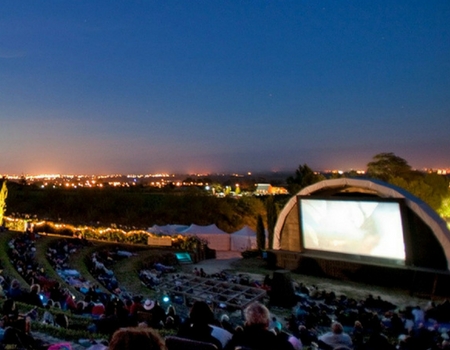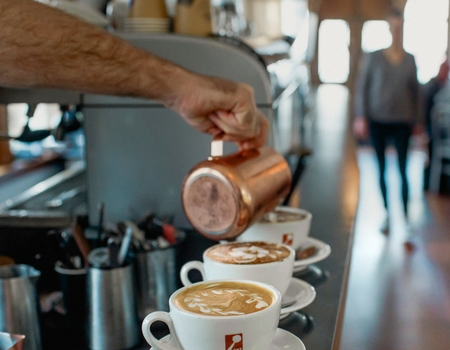Te Matau-a-Māui: The hook of Māui
Stories of Māui and his many daring feats can be heard throughout Te Moana-nui-a-Kiwa, the great Pacific Ocean. There are as many stories of Māui as there are story-tellers. Hawke’s Bay is where one of those stories has been passed down from generation to generation reflected in the name of the place, Te Matau-a-Maūi, the fish-hook of Māui, from what is perhaps the greatest fishing story of all time.
The story begins one day when Māui the pōtiki, the youngest child, wanted to go fishing with his older brothers, but they always had excuses refusing to take him, “oh you’re too young”, or “we don’t have enough room in the waka we need it for all the fish” – but that would not stop Māui.
The clue is in his very name, Mā-ui, which means to question, Māui always found a way, always challenged, nothing would stop him, not even his brothers.
So in his quest, he sought the guidance of his grandmother, Murirangawhenua, and she gave to him her jawbone which held special powers and the gift of knowledge, including a sacred karakia, or incantation, to help him.
Māui set about weaving a strong aho, a fishing line, and fashioning a double-barbed hook from her magic jawbone.
One night, Māui hid in the bottom of his brother’s fishing canoe. At dawn his brothers arrived, launching the waka and venturing far out to sea to their fishing grounds, wondering why their waka seemed a bit slow and heavy. When they arrived and started fishing Māui came out of hiding, much to the surprise of his brothers.
Māui did not like the fishing ground they had stopped at, as the special powers and knowledge from his grandmother drew him further out to sea. He made his brothers travel further and further, until finally, Māui found the right fishing spot.
Māui told his brothers to fish here, reciting the karakia shared by his Grandmother, and they started hauling up fish after fish. Finally, his brothers agreed to let Māui fish, so he took out his line and double barbed hook, but they would not share their bait with him, angry that Māui had made them travel so far. So, Māui hit his own nose causing it to bleed and used his own blood as bait on the special hook, his own sacrifice, just as his grandmother had made a sacrifice for him.
Māui cast his hook into the ocean and recited the karakia. At first there was no bites, so Māui started gaffing with his hook, it caught, and Māui braced himself against the walls of his great waka, Te Waka-a-Māui, The fish he caught was so large his brothers were scared, yelling at him to cut the line, cowering in the hull of the waka, but Māui doubled down and braced himself further, he twisted the aho around his hand and made one last giant pull, heaving with all his might raising a great fish from the depths, a sting-ray, foul-gaffed on its wing.
The giant ray thrashed and lashed out at his waka, taking a great bite tearing through the prow of the canoe with its sharp teeth. You can still see the remnants of the waka prow in the shredded landscape of the Marlborough Sounds at the top of the South Island, Te Waka-a-Māui.
As the great fish tired from its struggle, Māui’s waka was carried, or ‘kawekawe’, onto the back of the great fish, reflected in the name of the Kaweka ranges where his waka landed and his brothers disembarked on to the back of the great fish. Māui instructed them to wait while he returned to Hawaiiki to collect his kin to share in his great catch, and to do the right thing and bless the catch with the right karakia, or prayer, before cutting it up and sharing with all.
But when Māui returned with his kin, they could see his greedy brothers hacking at the fish with their knives and adzes butchering it and removing great chunks, in doing so forming the hills and valleys of the land we now know as Te Ika-a-Māui, the great fish of Māui, the North Island of New Zealand.
You can still see Māui’s double barbed hook today in the shape of Hawke’s Bay, from the southern barb at Te Kauwae-a-Māui, Cape Kidnappers, curving all the way round to Waikawa, Portland Island, in the North, the other barbed tip containing Maui’s sacred blood from his nose, with his DNA soaked into the soil.
When the famous voyaging waka Tākitimu arrived here from Polynesia bringing the ancestors of the present day Rongomaiwahine and Ngāti Kahungunu people, Ruawharo, a senior tohunga from the waka, established a wānanga, a special school of learning, on that sacred soil at Waikawa, known as Ngā heru-mai-tāwhiti, where Polynesian teachings were shared and have survived generations to this day.
If you journey to Te Matau-a-Māui across the ocean from the Pacific between July and August, you can also see the outline of Te Matau-a-Māui in the night sky, in the Scorpius constellation, that appears to lift the land as the earth rotates under the night sky. You can still voyage today like those ancestors on Te Matau-a-Māui, a current waka you will find in Ahuriri, Napier.
If you’re lucky, when you visit Hawke’s Bay, you just might find one of Māui’s descendants, or one of the many people of Hawke’s Bay that carry that spirit of Māui, the many seekers who dare to question and challenge, amazing people capable of amazing things, exploring, providing, sacrificing, and doing what’s right for people, place and planet, just like Māui.
Join us, we know you’ll soon be hooked on Hawke’s Bay because we never stop fishing, searching for what’s next and what’s new, proud of our place and our people.
Nau mai ki Te Matau-a-Māui, welcome to the Hook of Māui.
Content with thanks to Karl Wixon from Arahia

 back
back





